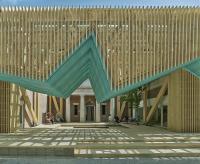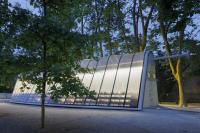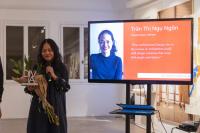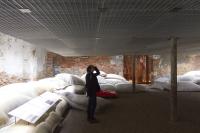Ecosystem Strategies for Urban Co-Habitation
Fulda, Alemanha
Challenging anthropocentric planning, the framework offers 8 strategic steps to achieve resilient co-habitats for our future. It empowers voices from human, flora, fauna, and water as equal protagonists and utilizes natures ecosystem and adapts the concepts for regenerative urban design strategies.
Architecture is more than building; it shapes society and affects our environment. Yet sustainable, regenerative practices and multi-species design are too often relegated to afterthoughts, undermining their full potential for resilience and ecological mindfulness. How can we inhabit our world without causing harm? How can we restore nature to counter biodiversity loss, and combat climate change? The work calls for a paradigm shift from human-centred planning to embrace all life. The thesis introduces an eight-step, ecosystem-oriented design framework, demonstrated at a site in Fulda, Germany.
"The eight strategic framework steps encompass extensive analysis, methodology, and applied design strategies.
The multi‐scale, multi‐stakeholder analysis goes beyond human needs only but incorporates equal distribution of environmental actors from water, flora, and fauna elements. Following the analysis, the key protagonists for each element are selected to enable new narratives for a local design.
Utilizing nature’s own strengths, the methodology is inspired by the ecosystem. Ecosystems are inherently resilient and adaptable due to their interwoven connections and synergies of organisms.
Therefore, each element is organized in subsystems, with one element as main protagonist—be it humans in the weavery system, fauna in a beaver habitat, or water in wetlands. The eight interconnected subsystems form a robust protagonist ecosystem paradigm, based on the actor analysis and needs.
To generate equal potential and cohabitation, AI-informed evolution metrics are applied to understand growth as well as distribution for the four elements across the site and time.
Strategic principles coordinate the systems design into one unified language and new aesthetic, ensuring protagonists like beaver, river Fulda, and existing trees are seamlessly integrated. The principles, combined with design tools reframe conventional concepts for adaptive reuse, vernacular understanding, and social values and into a transformative model of urban design.
Whilst tested at a site in Fulda, Germany, the framework serves as a blueprint adaptable to various geographical and climatic conditions. The integrative, ecosystem-based approach transforms socio-cultural contexts into regenerative practices, enhancing quality of life and contributing to regenerative design worldwide, considering all species."











